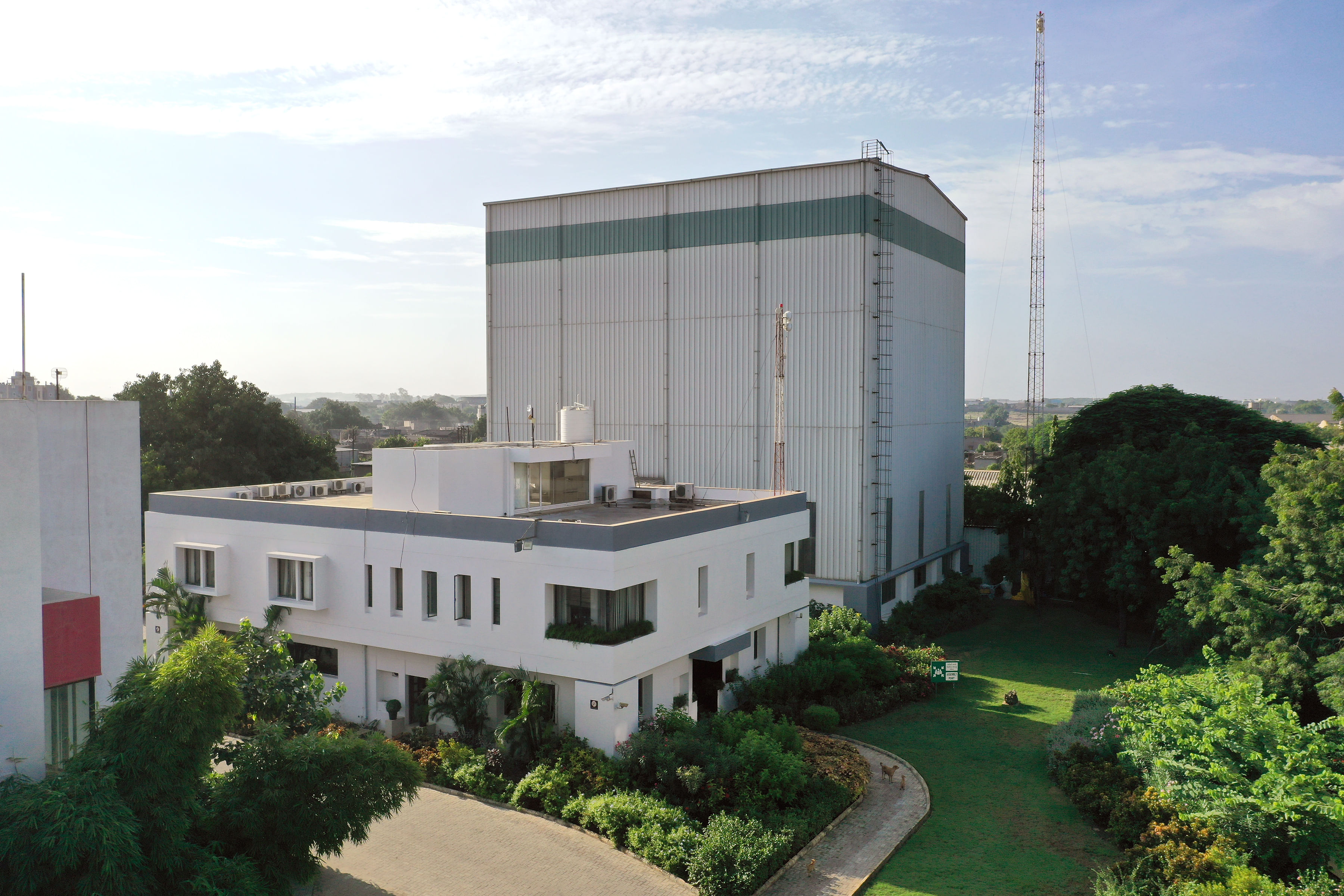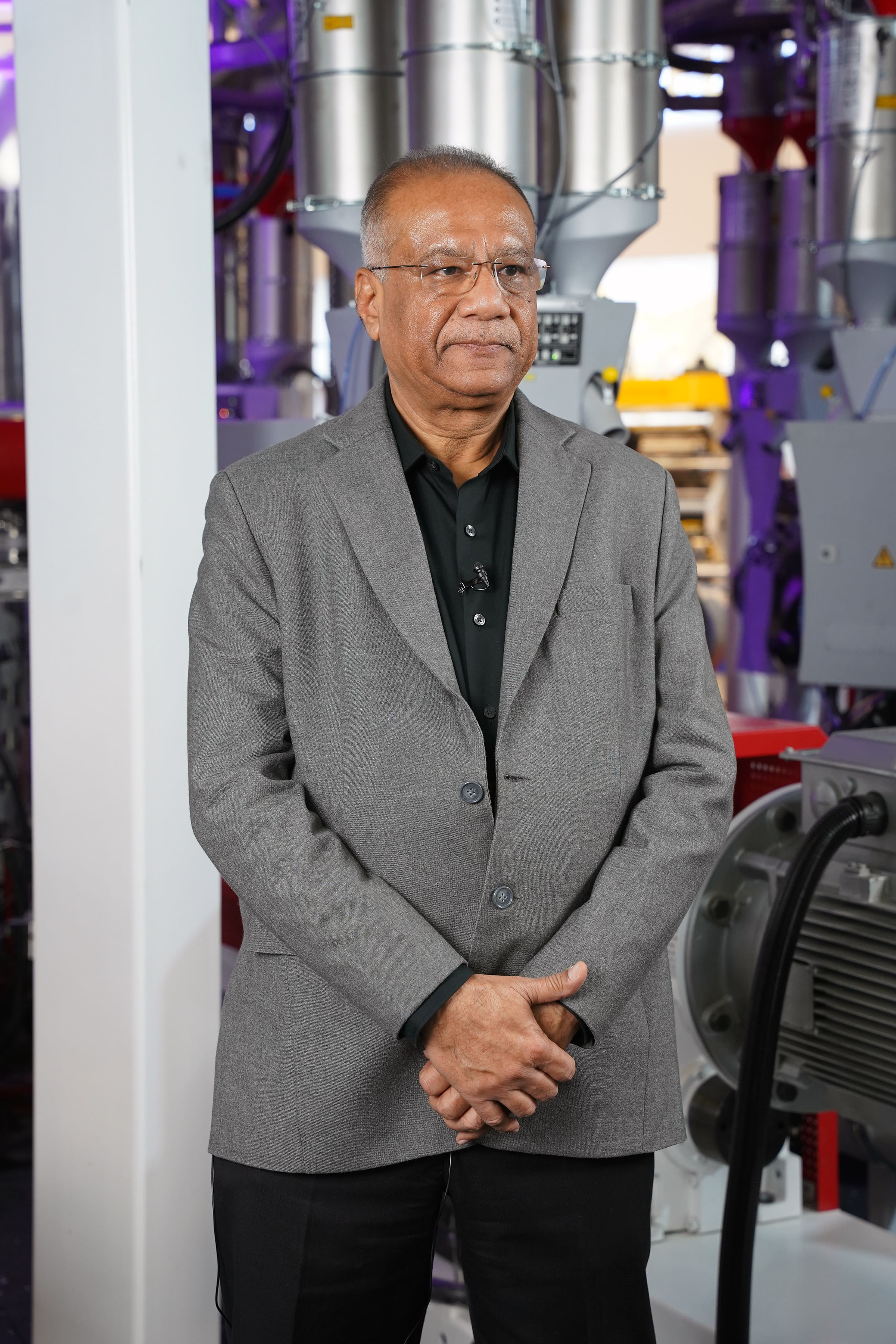Rajoo Engineer's Sunil Jain eyes plastic growth in packaging
And to maintain the momentum, the industry needs grassroots education on plastics, says Sunil Jain of Rajoo Engineers and the chairman of the Indian Institute of Packaging (IIP), an autonomous body under the Ministry of Commerce, Government of India, in a conversation with Rahul Kumar
08 May 2024 | By Rahul Kumar
Rahul Kumar (RK): Which packaging segments are poised for growth in the next five years – food, FMCG, pharma or beverages?
Sunil Jain (SJ): We need to look at it not just from the point of view of applications but also the materials. From the packaging consumption point of view, food will be the biggest, followed by pharma. We expect plastics in packaging to grow more compared to other packaging materials, such as metal or paper. That’s what the trends are.
RK: So, can we say, it feels like flexible packaging will grow in a bigger spectrum?
SJ: When we categorised plastic and food, then yes, flexible packaging will grow. Lots of rigid packaging formats are also getting converted into flexible packaging nowadays.
RK: When you say rigid, it means paper and board?
SJ: No, I am talking about plastics that will prove bigger than any other segment. People keep saying that plastic is not good, and not environmentally friendly, but there is a choice. When you say choice, you talk about flexibility, price, availability and all the related things.
RK: So, the number one is food. Another is pharma.
SJ: Yes, another application which will come up fast in the next three to five years is infrastructure.
RK: What kind of opportunities do you see in the future?
SJ: Agriculture, building and solar are the trends as of now. From the long-term perspective, we see these three sectors coming up.
RK: These will grow in double digits.
SJ: Solar will surely grow in double digits but others will also grow at a good rate.
RK: More new players will come or overseas players will come?
SJ: When we talk about solar and agriculture, newer people will come and the existing players will expand.

Team Rajoo Engineers
RK: How the year 2023 has shown us some of the faultiness and challenges in the system? Areas of improvement according to you?
SJ: One of the challenges continues to be the negative perception of plastics. The industry has to come together to overcome this challenge. As an industry, our lobby is very weak among the government authorities, and in advocacy for legal and policy changes. We will have to strengthen this.
RK: Who will take the initiative, or who is taking the initiative?
SJ: A lot of people are taking the initiative, including PlastIndia and a few others. But still, it’s not enough. Machine manufacturers and associations have also taken the initiative. This is an area I would personally like to contribute to as part of the Indian Institute of Packaging. Traditionally, plastics have been underplayed in the history of packaging. We are working towards increasing the perception of plastics.
RK: As an equipment manufacturer, what are your efforts to remove the negative perception of plastic?
SJ: As machine manufacturers, we support the people who are making these efforts, because we are still far away from the chain. You have the brand owners. Then you have the packaging material suppliers, the raw material suppliers and then the machine manufacturers/suppliers. So, we can support those ahead of us in the value chain because they are more visible compared to machine manufacturers. For example, if customers want to use recycled materials, we can give them the technology. Ultimately, they have to see what consumers want and how the demand can be handled.
RK: I have attended many seminars where brand owners say it's the government’s duty. On the other hand, the government says it's the responsibility of the brand owners.
SJ: Everyone has to understand their part of the job. The most important task is the collection and segregation; no one can do this alone. UFlex has built such a big facility in Noida, but sometimes they don’t get enough waste materials because of the lack of segregation and collection. That is a challenge that local authorities will need to address. The technology is there, whether it is downcycling or upcycling. We had a dedicated stall for recycled products in the 2019 edition of Indiaplast in Greater Noida.
RK: According to you, how much time will it take or it’s a gradual process?
SJ: It’s a gradual and continuous process. For example, when the ban on single-use plastic was implemented, everyone started saying that we should stop using all plastics. This is a perception that needs to be changed at the ground level.
RK: India is one of the largest consumers of packaged items in the world. How has IIP been boosting the growth prospects for packaging in India?
SJ: IIP has three distinct verticals – testing, education and consultancy. All these verticals contribute to the growth of the industry. If we talk about consultancy, we have carried out a lot of projects to boost handicraft exports. The government is planning to set up a world-class packaging laboratory at IIP Bombay for which a budget of Rs 100-crore has been granted. It will be operational in the next 18 months. We are creating awareness and are educating people. There is a shortage of packaging technologists. Also, we need a good number of faculties. We have more centres coming up. We have new working centres in Lucknow and Bengaluru.
RK: Apart from the Covid-related challenges, the packaging industry has been severely impacted by the substantial hike in raw materials prices. Who foots the bills? The manufacturers, the brands or the consumers?
SJ: Ultimately, the consumers have to pay for the expenses. Here, I am talking about converters because they give it to the consumers. But the converters, the industry and we, the machine manufacturers, are responsible for reducing the cost. The price has to be reasonable and affordable for the consumers.

“From the packaging consumption point of view, food will be the biggest, followed by pharma”
RK: Has the demand during and after the pandemic has led to any design innovation in packaging?
SJ: A lot of innovations have come up after the pandemic. A lot of work is being done to stop counterfeiting.
RK: As consumer behaviour change, how brands are adopting to the changes and how will it impact the brown box design and brand messaging?
SJ: The consumer needs more shelf life. If you go to rural areas and see the way packages are being handled, you will find the need to improve packaging. Consumption is increasing in the rural areas with more disposable income coming in. Now, they want to live more comfortably and they want to eat better. Also, people from urban areas are moving to semi-urban areas. So, there is a shift. The work-from-home culture has changed the entire scenario.
RK: The industry has seen a shift in a manner in which contractual agreements are drawn between vendors and clients. What kind of monitoring and evaluation systems are in place now?
SJ: It is becoming more sacrosanct now. Today there is more awareness whether it's a buyer or a seller. It is a positive sign that more and more legal framework is being developed. Even compliances are becoming important, whether its GST or others.
RK: Two emerging sectors, entry of modern retail and the therefore multicolour and photos realistic images and multi-colour graphics, what are the new possibilities?
SJ: Again, I will come back to two things. One is shelf life and the other is that it should be attractive. As there is a tough competition, no one likes to go with dull products. Modern retail has all those challenges because all of a sudden, you find small brands becoming famous. Nowadays, when you buy something, you look for how many stars it has, you go through the reviews. TV shows like Shark Tank are also increasing the modern trends. What big brands used to do after getting success, now small brand are doing it from the very beginning. Packaging of beverages has changed completely. You can even get Gujarati thepla being sold in vacuum packs in Delhi and other part of the country.
RK: What is your strategy in regards to sustainable and green raw materials sourcing in the near and long-term?
SJ: I think we need to look at it differently. Firstly, we have to look at it from the sustainability point of view. For that, we have to reduce the quantity of plastics in packaging because there are lot of products which are over-packaged. As soon as you reduce the plastics content, you are moving towards sustainability. The second step is to increase the content of recycled material.
RK: There is a green gap between what our industry talks about and the rest of society. Please suggest how the industry can bridge this gap.
SJ: The industry needs to make itself more visible. Education about how the packaging should be used or disposed will play a crucial role in taking the industry ahead in terms of sustainability. Everyone is talking about sustainability, but sustainability has different meaning for different people. At large, it is good for humans and the environment.
RK: How have you coped at personal level during the last 12 months?
SJ: I would not say coped. I would put it differently, saying that business opportunities have increased. If I have to talk about my company, the demand for both domestic and export has gone up. If we talk about our industry, people are looking at higher quality products and higher capacity products for which we have to keep upgrading ourselves.

Sunil Jain of Rajoo Engineers and the chairman of the Indian Institute of Packaging (IIP)
Rapid fire
How do you unwind?
Work and spiritually. Discussing the Gita gives me great motivation.
Favourite film?
I don't watch films.
Favourite holiday destination?
Spiritual places like ashrams.
Favourite snack in IIP canteen?
We don't have canteen at IIP.
Favourite conference at IIP?
The WorldStar event at IIP.
One thing about IIP that no one knows.
IIP needs to be more known.
Favourite packaging factory that you visited?
Balaji Multiflex and Gopal Printpac, both in Rajkot.
Future technology that India will invest in?
I think the biggest should come in renewable energy space and in this, plastics can bring a lot of technology changes.


